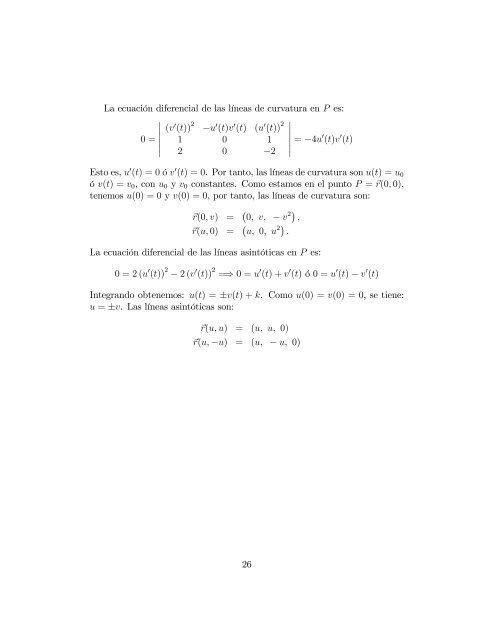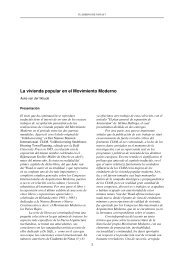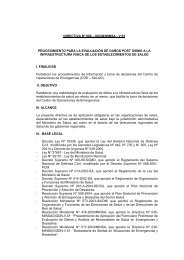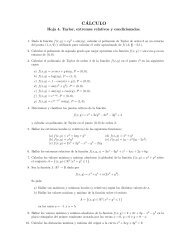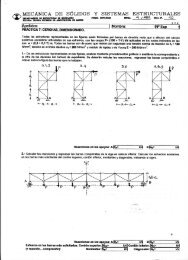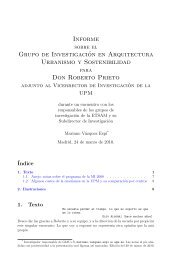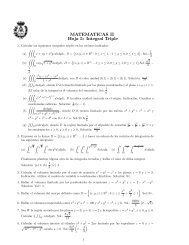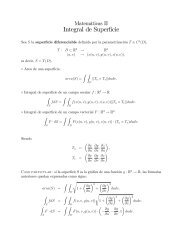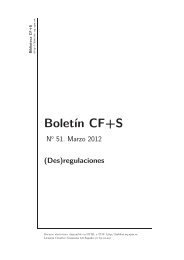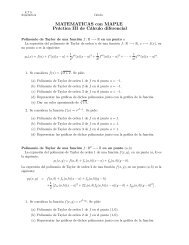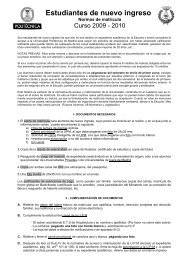apuntes
apuntes
apuntes
You also want an ePaper? Increase the reach of your titles
YUMPU automatically turns print PDFs into web optimized ePapers that Google loves.
La ecuación diferencial de las líneas de curvatura en P es:<br />
(v 0 (t)) 2 u 0 (t)v 0 (t) (u 0 (t)) 2<br />
0 =<br />
1 0 1<br />
2 0 2 = 4u0 (t)v 0 (t)<br />
Esto es, u 0 (t) = 0 ó v 0 (t) = 0. Por tanto, las líneas de curvatura son u(t) = u 0<br />
ó v(t) = v 0 , con u 0 y v 0 constantes. Como estamos en el punto P = ~r(0; 0),<br />
tenemos u(0) = 0 y v(0) = 0, por tanto, las líneas de curvatura son:<br />
~r(0; v) = 0; v; v 2 ;<br />
~r(u; 0) = u; 0; u 2 :<br />
La ecuación diferencial de las líneas asintóticas en P es:<br />
0 = 2 (u 0 (t)) 2 2 (v 0 (t)) 2 =) 0 = u 0 (t) + v 0 (t) ó 0 = u 0 (t) v 0 (t)<br />
Integrando obtenemos: u(t) = v(t) + k. Como u(0) = v(0) = 0, se tiene:<br />
u = v. Las líneas asintóticas son:<br />
~r(u; u) = (u; u; 0)<br />
~r(u; u) = (u; u; 0)<br />
26


